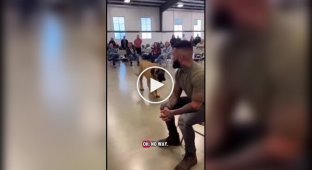Unique historical footage from the life of the United States that will take you back in time (21 photos)
These rare photographs acquire such value for each viewer because when looking at them you can touch history, lift the veil of secrecy and become one of those whose eyes were presented with previously unknown photographs. 
Post office in the stump of a huge cedar, USA, Washington, late 19th century.
In the mid-19th century, US loggers filled and began cutting down thousand-year-old forests, leaving behind many giant stumps. Which were later used as residential buildings or a post office. 
A walk along Fifth Avenue after a recent snowfall. New York City, 1905. 
A motorist on the edge of the Grand Canyon, USA, 1914.
Nothing has changed in a hundred years for those who like to take risks for a beautiful photograph. 
A girl with her pet cat in a stroller and a dog.
This photo was taken in Cleveland, Ohio, USA, sometime in the early 1900s. 
Little newspaper vendors. USA, 1909.
They were called "newsboys" and played a key role in distributing news throughout cities.
Children began working as newsboys as early as 8 years old. They worked in harsh conditions, often in cold weather and at night. Newsboys traveled on foot, by bicycle, or in horse-drawn carriages, delivering newspapers to homes, offices, and streets.
They earned a small amount of money, which they used to help their families. 
Steinhoff bobsled, for two. New Jersey, early 1900s.
The purpose of this unusual form of transport is unknown. 
Women's basketball team, USA 1900.
It is noteworthy that they played in dresses with long sleeves and wore corsets.
Basketball was invented in 1891 by James Naismith, a physical education teacher at Christian College in Springfield, Massachusetts, USA. 
The first construction train passes through the Palisades, Ten Mile Canyon, 1866–69.
The rugged cliffs of Colorado's Ten Mile Canyon provide a striking backdrop for a Central Pacific Railroad train traveling from California to Utah. However, the Shoshone Indians who inhabited the region are not visible in the image. Although the railroad successfully unified the states, it continually disrupted the environment and way of life of Native Americans. The trains carried settlers to new, western lands and in doing so played a significant role in displacing Native peoples. 
Lake George, New York, 1923.
A grandfather introduces his granddaughter to horses. 
A steam locomotive moves through a flooded street during the Boston flood, 1915.
Such a fantastic photo! Like from the movie "Back to the Future". Now this section of the railway is hidden in a tunnel underground due to dense development. 
Testing a bulletproof vest, Washington, 1923.
Not the best way to test a bulletproof vest. In those days, everyone tested everything on themselves; the engineer who built the bridge stood under it when a test locomotive passed over it. 
Mail delivery by dog, Alaska, USA, 1910.
Dog sleds carried mail in parts of the northern United States and the Alaska Territory during the winter months. Carriers used sleds throughout Alaska from the late nineteenth century to the early 1920s.
Because the weight of the dogs was a critical factor, mail transport by sled was usually limited to first-class mail unless there was room for newspapers, magazines, and parcels. Otherwise, these items would be left behind until spring, when they could be transported by steamboat.
Today, mail is delivered by small aircraft, and there are 254 operating airports in the state of Alaska. 
Pennsylvania Station, 1920s.
The station is located in New York City and was opened in 1910. It is named after the Pennsylvania Railroad, the largest railroad carrier in the 19th century. The company was founded in 1846. 
Portrait of an Ojibwe (or Chippewa) Indian girl. USA, 1907.
The Ojibwe are an Indian people of the Algonquian language family. They live on reservations in the United States, in the states of Michigan, Wisconsin, Minnesota, North Dakota, and in Canada. 
New Oldreive's Iron Horse tricycle, California. 1882. 
School bus in Maine, USA, 1930
This bus was not uncommon in the northern states of the USA. Very convenient, and even had a stove inside. 
A church on wheels based on a Ford T, USA, 1922. 
At the crossroads in Pratt, Kansas, USA, 1911. 
A street light truck, 1926. 
A Cheyenne Chief's Daughters, 1901, Billings, Montana. 





















